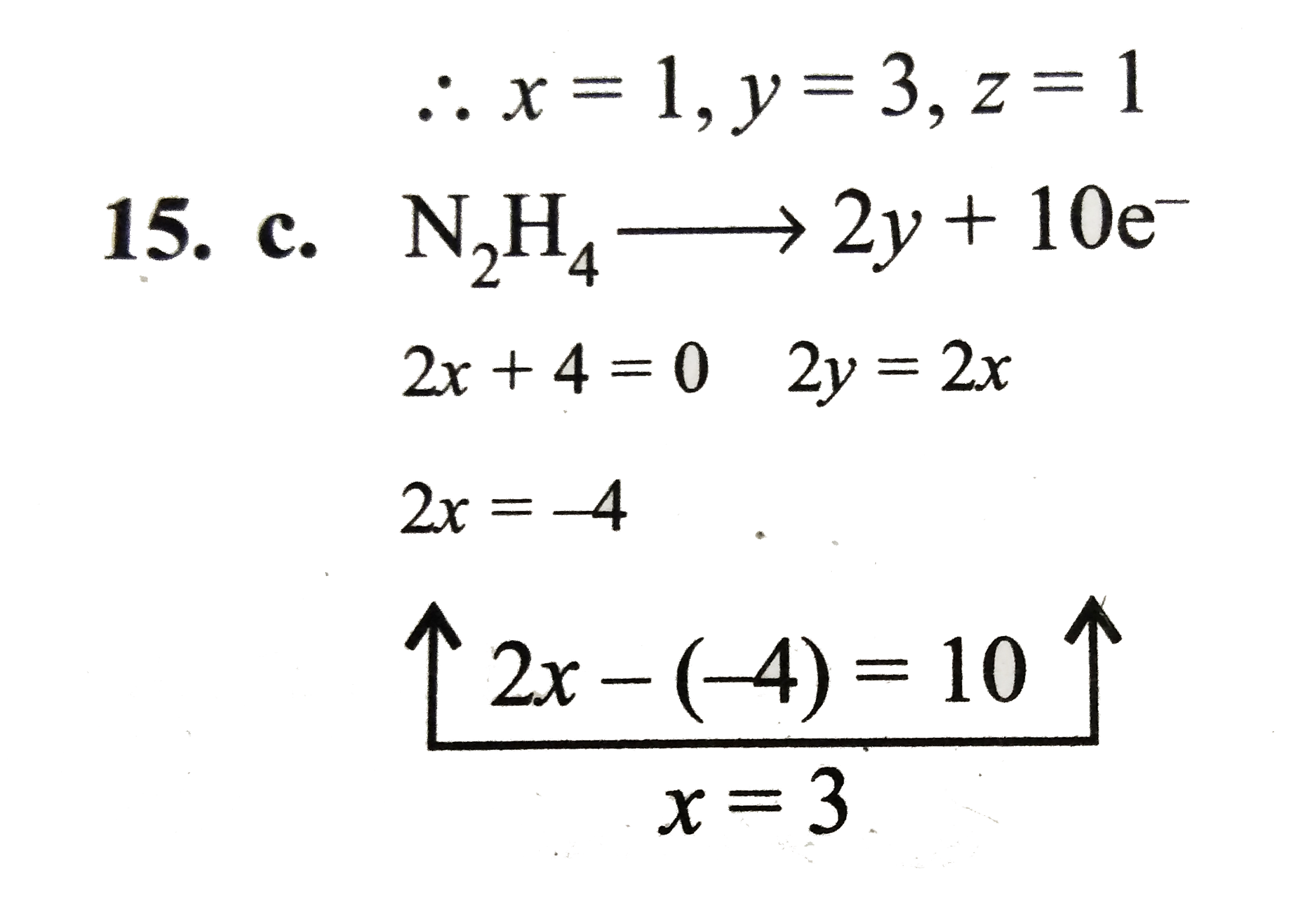One mole of loses ten moles of electrons to form a new compound . Assuming that all the nitrogen appears in the new compound, what is the oxidation state of nitrogen in ? (There is no change in the oxidation state of hydrogen.)
The correct Answer is:C
Topper's Solved these Questions
- BOOK - CENGAGE CHEMISTRYCHAPTER - REDOX REACTIONSEXERCISE - Exercises (Assertion-Reasoning)15videos
REDOX REACTIONS
- BOOK - CENGAGE CHEMISTRYCHAPTER - REDOX REACTIONSEXERCISE - Exercises (Integers)11videos
REDOX REACTIONS
- BOOK - CENGAGE CHEMISTRYCHAPTER - REDOX REACTIONSEXERCISE - Exercises (Multiple Correct)32videos
REDOX REACTIONS
- BOOK - CENGAGE CHEMISTRYCHAPTER - PURIFICATION OF ORGANIC COMPOUNDS AND QUALITATIVE AND QUANTITATIVE ANALYSISEXERCISE - Assertion Reasoning Type5videos
PURIFICATION OF ORGANIC COMPOUNDS AND QUALITATIVE AND QUANTITATIVE ANALYSIS
- BOOK - CENGAGE CHEMISTRYCHAPTER - S-BLOCK GROUP 1 - ALKALI METALSEXERCISE - Archives Subjective8videos
S-BLOCK GROUP 1 - ALKALI METALS
Similar Questions
One mole of N2H4 loses ten moles of electrons to form a new compound A. Assuming that all the nitrogen appears in the new compound, what is the oxidation state of nitrogen in A? (There is no change in the oxidation state of hydrogen.)
View SolutionOne mole of N2H4 loses ten moles of electrons to form a new compound A. Assuming that all the nitrogen appears in the new compound, what is the oxidation state of nitrogen in A? (There is no change in the oxidation state of hydrogen.)
View Solution
Knowledge Check
- Question 1 - Select One
One mole of N2H4 loses ten moles of electrons to form a new compound A. Assuming that all the nitrogen appears in the new compound, what is the oxidation state of nitrogen in A? (There is no change in the oxidation state of hydrogen.)
A+2B−2C+3D+4 - Question 2 - Select One
One mole of N2H4 loses ten moles of electrons to form a new compound Y. Assuming that all the nitrogen appears in the new compound, what is the oxidation state of nitrogen in Y ? There is no change in oxidation state of hydrogen.
A−1B−3C+3D+5 - Question 3 - Select One
A mole ofN2H4loses ten moles of electrons to form a new compound Y. Assuming that all the nitrogen appears in the new compound, what is the oxidation state of nitrogen in Y? (There is no change in the oxidation number of hydrogen.)
A−1B−3C+3D+5
1 mol of N2H4 loses 14 moles of electrons to from a new compound X. Assuming that the entire nitrogen appear in the new compound, what is the oxidation state of nitrogen in X?
View SolutionA mole of N2H4 loses 10 mol of electrons to form a new compound Y. Assuming that all the nitrogen appears in the new compound, what is the oxidation state of nitrogen in Y? (There is no change in the oxidation number of hydrogen)
View SolutionOne mole of N2H4 loses 10 moles of electrons of form a new compound, y. Assuming that all nitrogen appear in the new compound, what is the oxidation state of nitrogen in y. (There is no change in the oxidation state of hydrogen.)
View SolutionOne mole of N2H4 loses 10 moles of electrons to form a new compound y. assuming that all nitrogen appear in the new compound, what is the oxidation state of nitrogen in y (there is not change in the oxidation state of hydrogen)
View SolutionThe concept of oxidation number (O.N) is very important in under standing redox reaction s it helps to identify the oxidant / reductant in a redox reaction it also helps to (i) find oiut the possible molecular formula of any neutral compound and (ii) to balance redox reaction
A mole of hydrazine (N2H4) loses ten moles of electrons to form a new compound X assuming that all the nitrogen appears in the new compound what is the oxidation state of nitrogen in x ? (there is no change in the oxidation number of hydrogen in the reaction )View Solution


